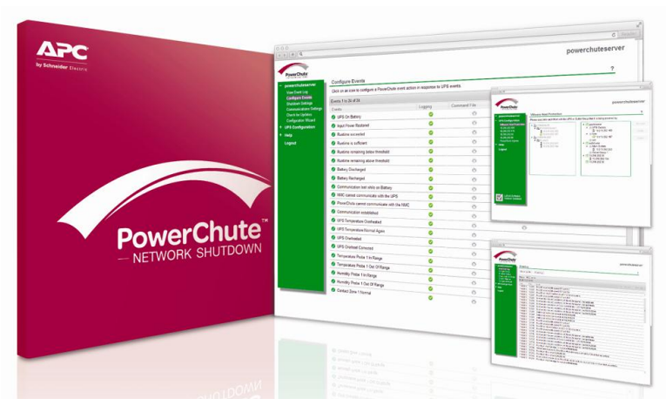
- #POWERCHUTE BUSINESS EDITION HYPER V INTEGRATION SOFTWARE#
- #POWERCHUTE BUSINESS EDITION HYPER V INTEGRATION SERIES#
- #POWERCHUTE BUSINESS EDITION HYPER V INTEGRATION WINDOWS#
#POWERCHUTE BUSINESS EDITION HYPER V INTEGRATION SOFTWARE#
The solution that I presented in the previous article generally works, but there is no way for the power management software to be able to confirm that all of the virtual machines have shut down before the battery runs out of power. So what makes PowerChute Network Shutdown for Hyper-V different from any other edition of the PowerChute software? Well, because the application is specifically designed for virtualization hosts, it coordinates and confirms the shutdown of virtual servers prior to the UPS running out of battery power. Additionally, the network card must be running firmware version 3.3.1 or later. The reason why only specific UPS models are supported is because the software requires each UPS to have an APC Network Management Card installed.
#POWERCHUTE BUSINESS EDITION HYPER V INTEGRATION SERIES#
Presently, the software works with the following APC models: any Smart-UPS with a card slot or an embedded Network Management Card, any Smart-UPS DP UPS, any Symmetra UPS, or any Silicon Series UPS. As the name implies, PowerChute Network Shutdown for Hyper-V is a special version of PowerChute that is especially designed for use with host servers that are running Hyper-V.īefore I begin talking about everything that the software does, I should point out that PowerChute Network Shutdown for Hyper-V is not compatible with all APC UPSs. One of the best solutions that I have found is to use an application made by APC called PowerChute Network Shutdown for Hyper-V. Thankfully, there are still some viable power management options available. Even if server performance weren’t an issue, many organizations prefer to use non GUI based Hyper-V deployments because doing so is an effective way of reducing the host server’s attack surface.Īt any rate, if your virtualization host servers are not running a GUI, then it means that you won’t be able to perform power management in the way that I described in the previous article.

#POWERCHUTE BUSINESS EDITION HYPER V INTEGRATION WINDOWS#
Running Windows Server 2008 with a GUI gives me lots of flexibility and allows me to use low end power management software, but it diminishes the server’s performance because the GUI consumes some CPU cycles and other server resources that could have been used by the virtual machines.

It always seems that there is a tradeoff between flexibility and performance. This would not have been possible if I were running Hyper-V on a server core deployment or if I ran the standalone version of Hyper-V Server. As you may recall, I am running APC PowerChute on my host servers. Although doing so will decrease the amount of time that your batteries will keep the server online, it does help to ensure that the storage array does not run out of power before the server does.Īnother reason why my virtualization hosts may not accurately reflect what some other organizations are using is because I am running Hyper-V on top of Windows Server 2008 R2 Enterprise Edition. If you have a large enough UPS, you may be able to get away with plugging your storage array into the same UPS as your virtualization host servers. Once you know how long your storage array can run on battery power, you can configure your virtualization hosts to shut down before the storage array can run out of power. The trick is to be able to accurately determine how long a storage array can run on battery power. There are plenty of storage vendors who offer storage arrays with built-in battery backups. Using external storage is not always problematic.

After all, being able to gracefully shut down your virtual machines means nothing if your storage arrays run out of power before the shut down process is complete.

My point is that using external storage arrays complicates power management. Larger organizations often use shared storage (which is useful for vMotion or Live Migration) or even host virtual hard drives on a SAN. In contrast, many organizations who use direct attached storage do so in the form of external storage arrays with their own dedicated power supplies. The reason why this is significant is because the server’s storage array is powered by the server’s own internal power supply. For example, the server shown in the screen captures in Part 1 contains an integrated six disk array in addition to the disk containing the system volume. One of the things that differentiates my virtualization host servers from those used in many other organizations is that my servers are completely self contained.


 0 kommentar(er)
0 kommentar(er)
